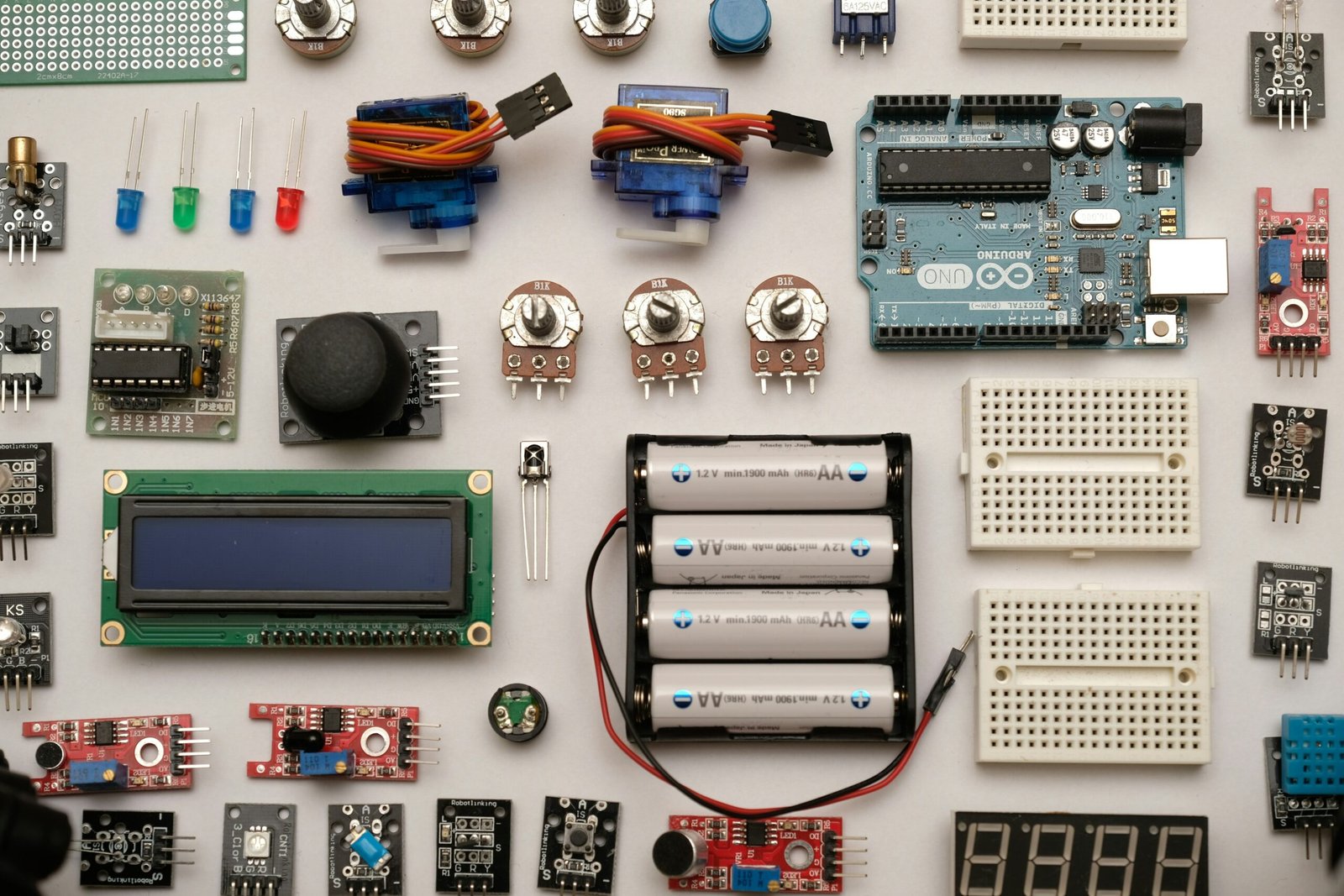
Photo by <a href="https://unsplash.com/@nahakiole" rel="nofollow">Robin Glauser</a> on <a href="https://unsplash.com/?utm_source=hostinger&utm_medium=referral" rel="nofollow">Unsplash</a>
Understanding the Magneto Elastic Torque Sensor Market
Magneto elastic torque sensors represent a critical technological advancement within the realm of industrial measurement systems. These sensors operate based on the principle of magneto elastic technology, which utilizes the magnetic properties of materials to accurately measure torque in rotating components. The fundamental operation of magneto elastic sensors involves the application of a magnetic field to a magneto elastic element, allowing for the detection of torque via changes in magnetic properties. This innovative approach has led to widespread usage across various industrial sectors.
The significance of magneto elastic torque sensors lies in their ability to deliver high-precision measurements with minimal disruption to the operational process. Industries such as automotive, aerospace, and manufacturing have benefited from their implementation, allowing for improvements in efficiency, safety, and performance monitoring. Additionally, as the complexity of machinery increases, the demand for robust and reliable measurement solutions has surged. This escalating need is primarily driven by factors such as the push for increased precision in manufacturing processes, regulatory compliance, and the rise of automation technologies.
The magneto elastic torque sensor market is poised for significant growth, influenced by several key trends. Firstly, technological advancements in sensor design and materials have enhanced measurement accuracy and broadened application scopes. Moreover, as industries embrace digital transformation, there is a growing incorporation of Internet of Things (IoT) capabilities in sensor technology, further driving the adoption of magneto elastic solutions. Additionally, the increasing focus on preventive maintenance strategies emphasizes the importance of real-time torque measurement, propelling the market forward.
In this dynamic landscape, businesses across multiple sectors are eager to leverage magneto elastic torque sensors to optimize performance and maintain competitive edge. This burgeoning market continues to evolve as innovations in sensor technologies unfold, showcasing a promising trajectory for the future.
Market Segmentation of Magneto Elastic Torque Sensors
The magneto elastic torque sensor market is characterized by its diverse segmentation, which primarily encompasses product types, technologies, and applications. Understanding these segments is essential for stakeholders looking to navigate this dynamic industry effectively.
Product types within the magneto elastic torque sensor market can be broadly classified into low torque sensors and high torque sensors. Low torque sensors are typically utilized in applications where precision at lower values is essential, such as in robotics and small-scale manufacturing. Conversely, high torque sensors are designed for heavy-duty applications, including automotive machinery and industrial equipment where measuring torque accurately is crucial for performance and safety. This differentiation allows customers to select sensors that best meet their operational needs.
From a technological perspective, the market includes inductive and capacitive technologies as key segments. Inductive sensors are valued for their robustness and accuracy, making them ideal for demanding environments. On the other hand, capacitive sensors offer advantages in terms of sensitivity and compactness, which can be beneficial in applications where space is at a premium. Each of these technologies presents unique benefits, contributing to diverse implementation scenarios across various sectors.
Moreover, the applications of magneto elastic torque sensors extend across multiple industries, including automotive, aerospace, manufacturing, and energy. In the automotive sector, for example, these sensors are critical for monitoring and controlling torque in engine performance and driveline systems. In the aerospace industry, they play a vital role in aircraft operation and safety, helping ensure precise measurements during flight operations. Similarly, in manufacturing, they assist in optimizing machinery performance and reducing downtime. In energy applications, these sensors contribute significantly to the efficiency of renewable energy systems, such as wind turbines. Thus, each segment reflects the importance of torque sensors in enhancing operational efficiency and safety across varying sectors.
Key Players in the Magneto Elastic Torque Sensor Market
The magneto elastic torque sensor market has witnessed significant growth in recent years, propelled by advancements in technology and increasing demand for precision measurement. Within this landscape, several key players have emerged, shaping the competitive dynamics of the market.
One of the foremost companies in this sector is Honeywell, renowned for its extensive portfolio of innovative sensor solutions. Honeywell offers a variety of torque sensors that incorporate cutting-edge magneto-elastic technology, catering to diverse applications in automotive, aerospace, and industrial sectors. Their focus on research and development has enabled them to maintain a strong market position.
HPI is another significant player in the magneto elastic torque sensor market. Specializing in high-performance measurement instruments, HPI provides an array of torque sensors that are widely utilized in dynamic testing applications. Their commitment to quality and precision has established them as a trusted provider among engineers and manufacturers alike.
Additionally, TE Connectivity plays a vital role, offering advanced torque sensing solutions designed to enhance operational efficiency. With a robust global presence, TE Connectivity focuses on meeting the burgeoning needs of various industries through innovative sensor technology.
FUTEK Advanced Sensor Technology is also worth mentioning, as it designs and manufactures a range of magneto elastic torque sensors known for their reliability in tough environments. Their products are engineered to provide accurate measurements critical for system performance.
Other notable players include Siemens, OMEGA Engineering, and Kistler, each contributing to the market with their specialized product offerings and strategic initiatives aimed at enhancing customer value. These companies leverage their technological expertise and market knowledge to strengthen their positions and remain competitive.
The combination of these industry leaders significantly influences the magneto elastic torque sensor market, driving innovation and enhancing product availability, which ultimately benefits end-users across various sectors.
What is the Regional Analysis of the Magneto Elastic Torque Sensor Market?
The regional analysis of the Magneto Elastic Torque Sensor Market reveals significant variations in market performance due to diverse economic conditions, technological advancements, and regulatory frameworks across different regions. North America currently leads the market, primarily driven by robust industrial automation, stringent safety regulations, and a strong focus on advanced measurement technologies. The demand for magneto elastic torque sensors in automotive and aerospace applications further bolsters market growth in this region, resulting in forecasted growth rates that reflect both technological innovation and increased investment in infrastructure.
In Europe, the market for magneto elastic torque sensors is expanding due to increasing environmental regulations and the transition towards sustainable energy sources. The European Union’s commitment to reducing carbon emissions encourages the adoption of precision torque measurement tools in various industries, such as wind power and automotive. However, market growth may be tempered by the slow pace of regulatory approvals for new technologies. The diverse economic landscape also means that growth rates can vary significantly between countries such as Germany and less industrialized nations within the region.
Asia-Pacific is witnessing rapid growth in the magneto elastic torque sensor market, driven by industrialization and advancements in technology, particularly in countries like China and India. The increase in automotive production and a growing emphasis on quality control in manufacturing processes are key factors for this growth. Nonetheless, the region also faces challenges such as the need for substantial investment in research and development to cater to the evolving demands of end-users.
Other regions, including Latin America and the Middle East, are in the early stages of adopting magneto elastic torque sensor technology. While opportunities for growth exist due to emerging industries, the lack of infrastructure and investment poses challenges. Overall, the magneto elastic torque sensor market is poised for growth across regions, but local market dynamics and regulatory considerations will significantly influence performance.
Frequently Asked Questions (FAQ) about Magneto Elastic Torque Sensors
Magneto elastic torque sensors have gained considerable attention in numerous industries due to their unique operational principles and benefits. One of the most common questions pertains to how these sensors actually work. Essentially, magneto elastic torque sensors function based on the principle of magnetostriction. When torque is applied to the sensor, the material experiences a change in its magnetic characteristics, which can be measured and correlated to the amount of torque being exerted. This technology enables highly accurate torque measurements across a variety of applications.
Another frequently asked question revolves around the advantages of magneto elastic torque sensors compared to other torque measurement technologies. One notable advantage is their excellent sensitivity and accuracy, which allow for precise torque readings even in challenging conditions. Additionally, these sensors exhibit a robust design, often providing better durability against environmental factors such as vibration and extreme temperatures. Moreover, magneto elastic sensors typically require minimal maintenance, resulting in reduced downtime and lower operational costs.
Potential users might also inquire about the considerations when selecting the right magneto elastic torque sensor for a specific application. Key factors to take into account include the range of torque to be measured, the environmental conditions in which the sensor will operate, and the required output signal type for system integration. Furthermore, it is essential to evaluate the sensor’s mounting options and ensure compatibility with existing machinery. By carefully assessing these parameters, users can make informed decisions that enhance measurement accuracy and operational efficiency.
In conclusion, understanding the fundamental principles, advantages, and selection criteria for magneto elastic torque sensors equips readers with the knowledge necessary to effectively utilize this technology in their applications.



